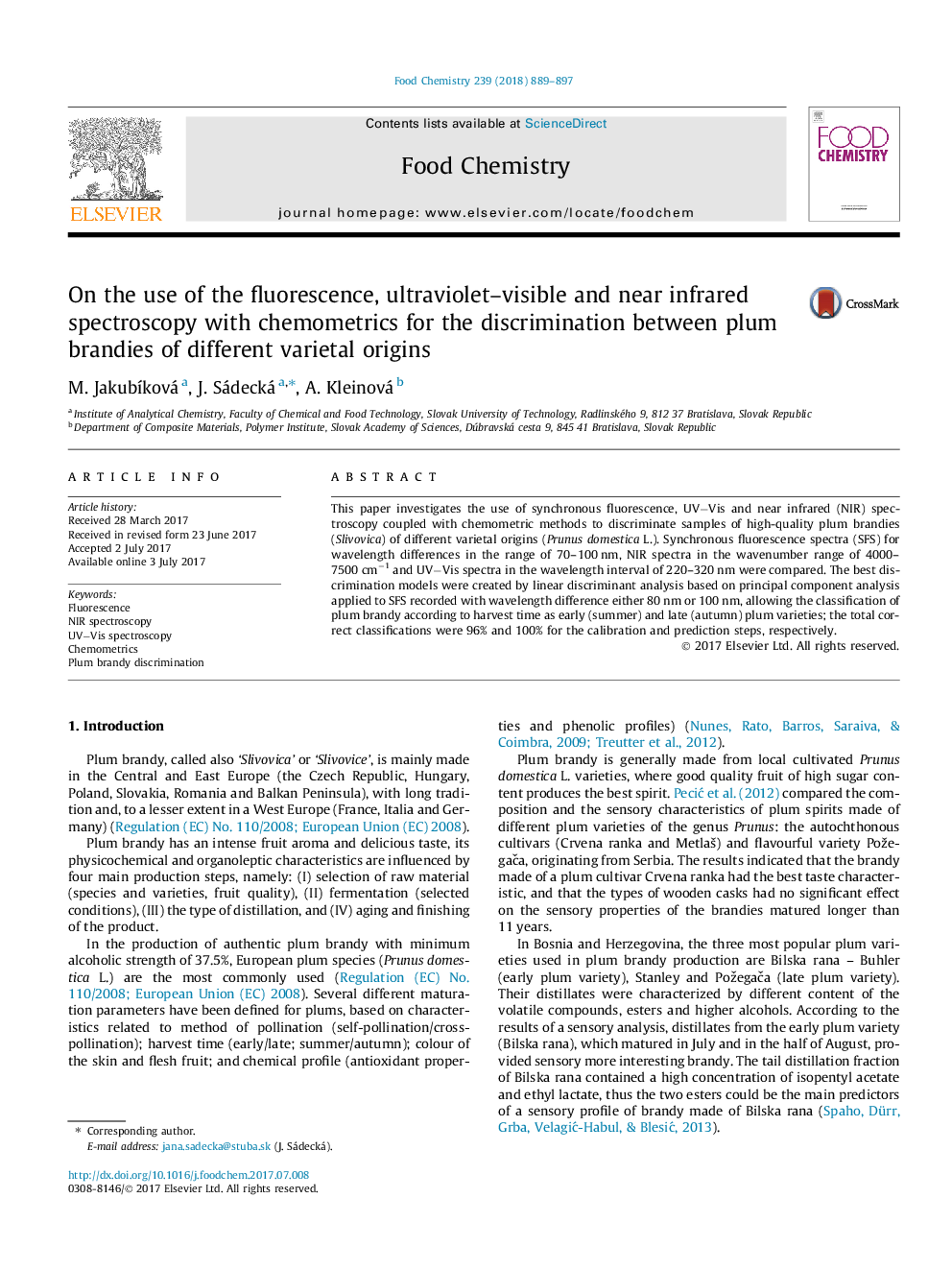| Article ID | Journal | Published Year | Pages | File Type |
|---|---|---|---|---|
| 5133033 | Food Chemistry | 2018 | 9 Pages |
â¢Synchronous fluorescence, NIR and UVâVis spectroscopy were compared.â¢Plum brandy samples were evaluated in view of the varieties and their origin.â¢Classification of brandies according to plum harvest time was obtained.â¢Classification rate follows the order synchronous fluorescence > NIR > UVâVis.â¢Using synchronous fluorescence, the correct discrimination rate was 96%.
This paper investigates the use of synchronous fluorescence, UVâVis and near infrared (NIR) spectroscopy coupled with chemometric methods to discriminate samples of high-quality plum brandies (Slivovica) of different varietal origins (Prunus domestica L.). Synchronous fluorescence spectra (SFS) for wavelength differences in the range of 70-100Â nm, NIR spectra in the wavenumber range of 4000-7500Â cmâ1 and UVâVis spectra in the wavelength interval of 220-320Â nm were compared. The best discrimination models were created by linear discriminant analysis based on principal component analysis applied to SFS recorded with wavelength difference either 80Â nm or 100Â nm, allowing the classification of plum brandy according to harvest time as early (summer) and late (autumn) plum varieties; the total correct classifications were 96% and 100% for the calibration and prediction steps, respectively.
